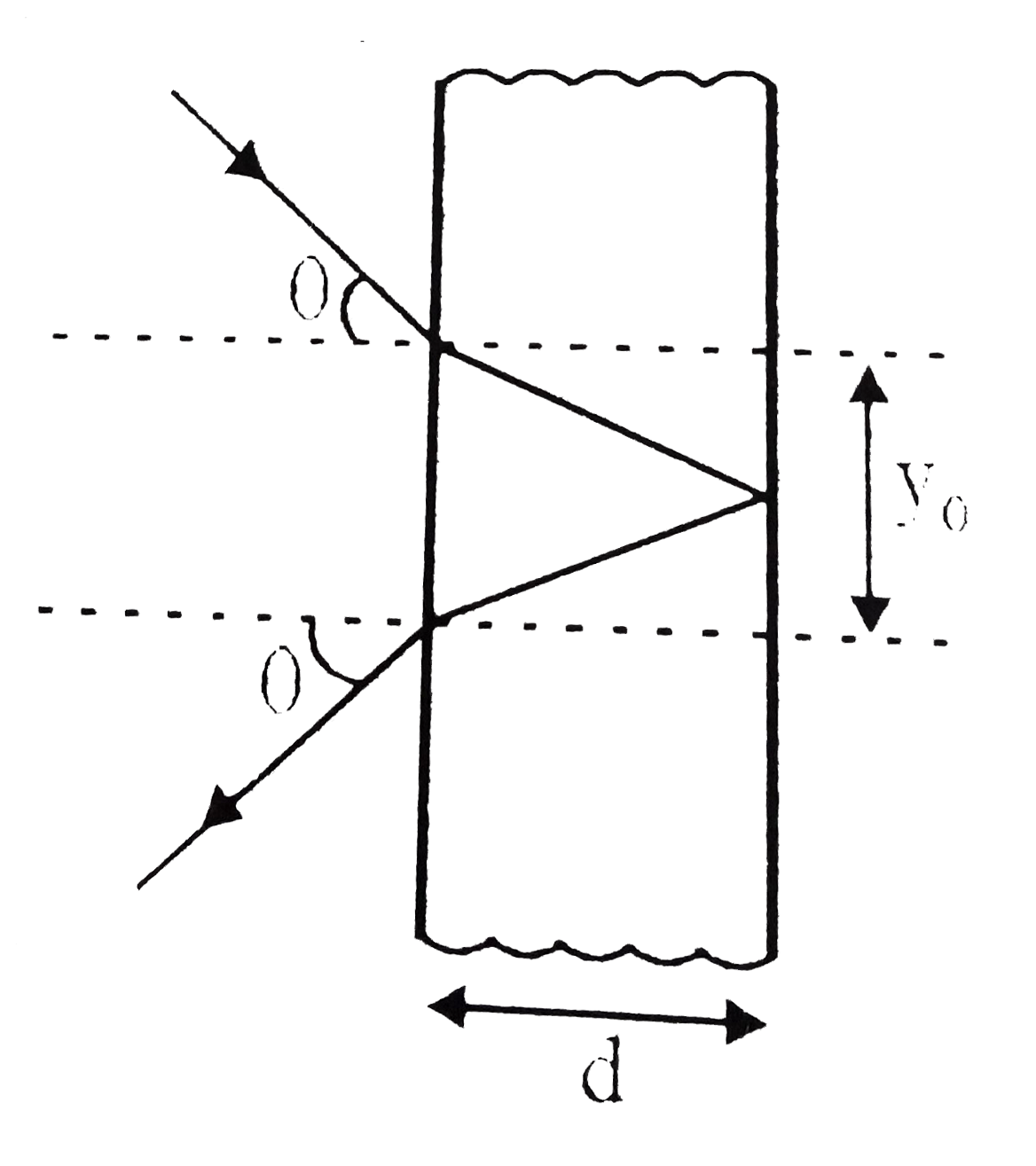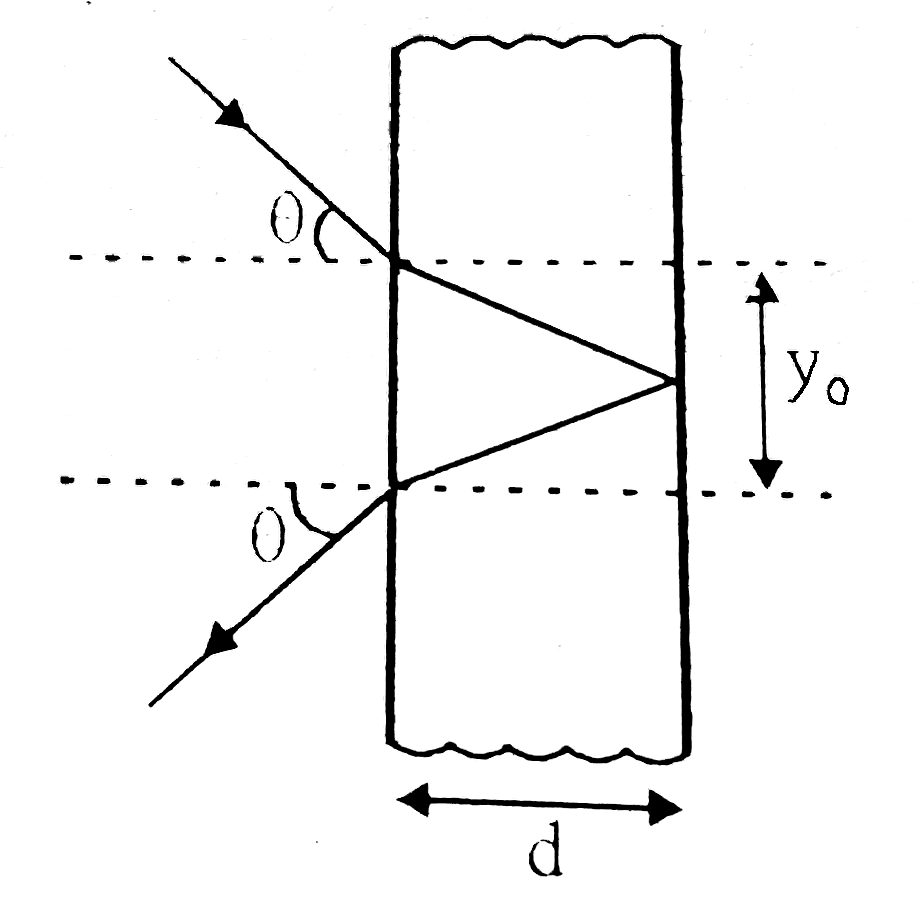A : Newton.s rings are formed in the reflected system when the space between the lends and the glass plate is filled with a liquid of refractive index grater than that of glass, the central spot of the pattern is bright.
R : This because the reflection in these cases will be from a denser to a rarer medium and the two interfering rays are reflected under similar conditions.
Both A and R are true and R is the correct explanation of A
Both A and R are true and R is not the correct explanation of A
A is true and R is false
Both A and R are false
The correct Answer is:A
Topper's Solved these Questions
- WAVES OPTICSBOOK - AAKASH SERIESCHAPTER - WAVES OPTICSEXERCISE - EXERCISE -II (INTERFERENCE)
27 Videos
- WAVES OPTICSBOOK - AAKASH SERIESCHAPTER - WAVES OPTICSEXERCISE - EXERCISE -II (DIFFRACTION)
17 Videos
- WAVES OPTICSBOOK - AAKASH SERIESCHAPTER - WAVES OPTICSEXERCISE - EXERCISE -IA (ASCENDING AND DSCENDING ORDER TYPE QUESTIONS)
6 Videos
- WAVESBOOK - AAKASH SERIESCHAPTER - WAVESEXERCISE - EXERCISE-III (Doppler effect :)
15 Videos
Similar Questions
Assertion : Newton's rings are formed in the reflected system. When the space between the lens and the glass plate is filled with a liquid of refractive index greater than that of glass, the central spot of the pattern is bright.
Reason : This is because the reflections in these cases will be from a denser to a rarer medium and the two interfering rays are reflected under similar conditions.
View SolutionThe spherical surface of a plano-convex lens comes into contact with a glass plate. The space between the lens and the plate is filled up with carbon dioxide. The refractive indies of the lens, carbon dioxide, and the plate are equal to n1=1.50,n2=1.63, and n3=1.70 respectively. the curvature radius of the spherical surface of the lens is equal to R=100cm. Determine the radius of the fifth dark Newton's ring in reflected light with wavelength λ=0.50μm.
View Solution
Knowledge Check
Assertion : Newton's rings are formed in the reflected system. When the space between the lens and the glass plate is filled with a liquid of refractive index greater than that of glass, the central spot of the pattern is bright.
Reason : This is because the reflections in these cases will be from a denser to a rarer medium and the two interfering rays are reflected under similar conditions.AIf both, Assertion and Reason are true and the Reason is the correct explaination of the Assertion.BIf both, Assertion and Reason are true but Reason is not a correct explaination of the Assertion.CIf Assertion is true but the Reason is false.DIf both, Assertion and Reason are false.A ray of light incident from air on a glass plate of refractive index n is partly reflected and partly refracted at the two surfaces of the glass. The displacement y0 in the figure is
 A2dsinθ√n2−sin2θB2dsinθ√sin2θ−1n2C2d√n2−sin2θsinθDNone of these
A2dsinθ√n2−sin2θB2dsinθ√sin2θ−1n2C2d√n2−sin2θsinθDNone of theseA ray R1 is incident on the plane surface of the glass slab (kept in air) of refractive index √2 at angle of incident equal to the critical angle for this air glass system. The refracted ray R2 undergoes partial reflection & refraction at the other surface. The angle between the reflected ray R3 and the refracted ray R4 at that surface is :
 A45∘B135∘C105∘D75∘
A45∘B135∘C105∘D75∘
A : When an unpolarised light is incident on a glass plate at Brewster angle, the reflected ray and refracted ray are matually perpendicular.
R : The refractive index of glass is equal to sine of the angle of polarisation.
View SolutionTwo identical equiconvex lenses made of glass of reflected index 1.5 placed in contact has power P. When a liquid of refractive index μ is filled in the gap between the convex lenses, the power becomes of initial value (P/3). The value of μ isK3. Find the value of K
View SolutionA convex lens of focal length 15 cm and a concave mirror of focal length 30 cm are kept with their optic axis PQ and RS parallel but separated in vertical directiion by 0.6 cm as shown . The distance between the lens and mirror is 30 cm . An upright object AB of height 1.2 cm is placed on the optic axis PQ of the lens at a distance of 20 cm from the lens . if A'B' is the image after refraction from the lens and the reflectiion from the mirror , find the distance of A'B' from the pole of the mirror and obtain its magnification . Also locate positions of A' and B' with respect to the optic axis RS.
_E01_247_Q01.png)
View SolutionA ray of light incident from air on a glass plate of refractive index n is partly reflected and partly refracted at the two surfaces of the glass. The displacement y0 in the figure is

View SolutionA ray of light incident from air on a glass plate of refractive index n is partly reflected and partly refracted at the two surfaces of the glass. The displacement y0 in the figure is

View Solution
